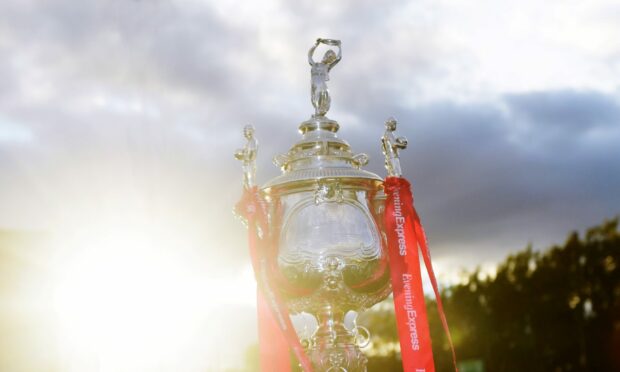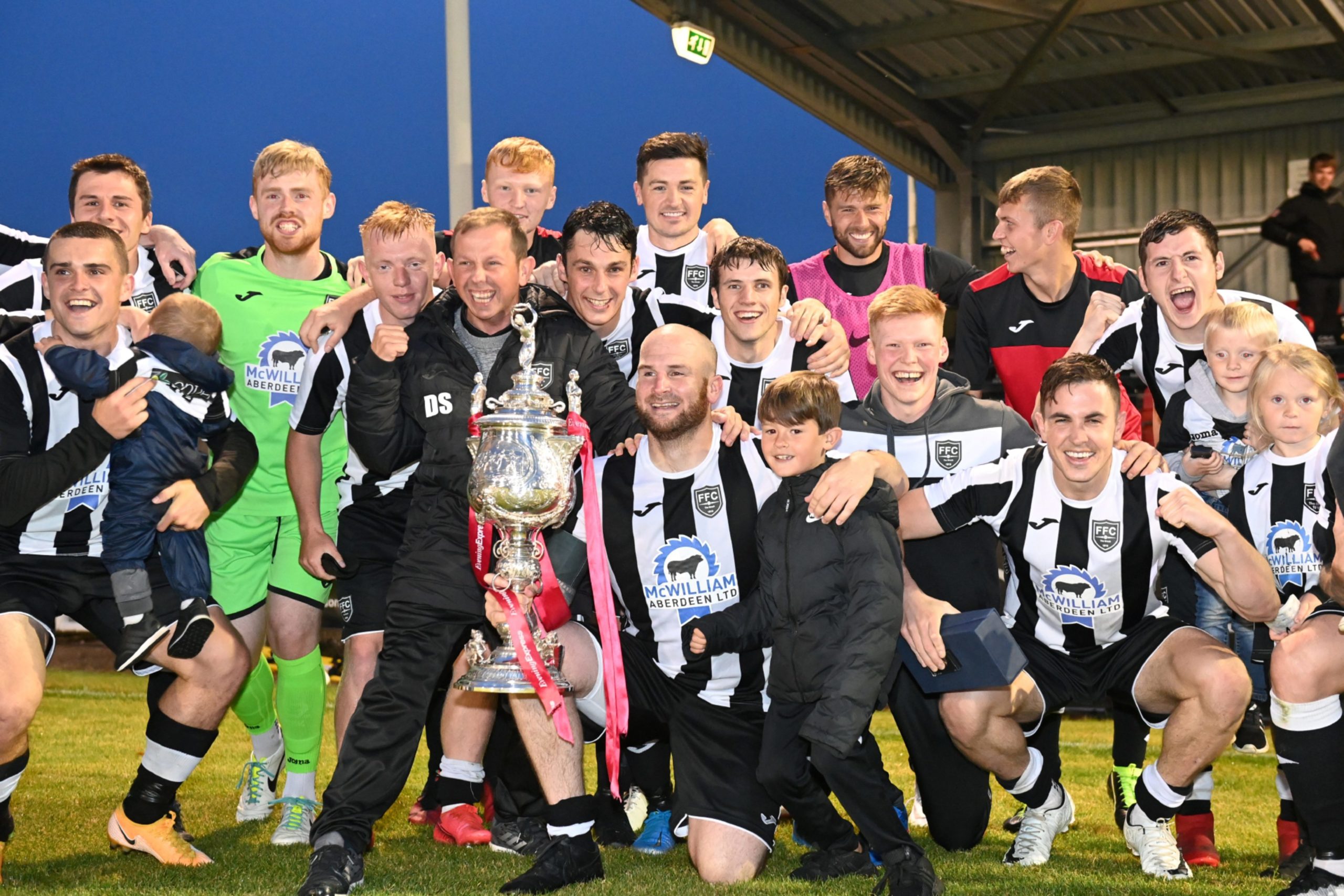The Evening Express Aberdeenshire Cup is a competition with a rich history.
Formartine United and Banks o’ Dee will contest the 125th final at Harlaw Park, Inverurie.
In the history of the competition there have only been two periods where the cup hasn’t been played for – between 1915 and 1919 and 1939 and 1945 because of the two World Wars.
The start
The tournament began on Saturday December 3 1887 with 12 teams – Aberdeen, Albert, Balmoral, Our Boys, Granite City, Aberdeen Rangers, Caledonian, Black Diamond, Port Elphinstone, Aberdeen Rovers, Orion and Britannia – taking part.
Aberdeen were the inaugural Shire Cup winners, defeating Aberdeen Rangers 7-1 on March 24 1888 in the first final.
Aberdeen won the tournament again the following season and were given the first Aberdeenshire Cup trophy to keep which led to the current trophy being purchased.
Historic trophy
Having first been presented in 1890, it is the second oldest trophy in world football to still be awarded to tournament winners, behind only the Scottish Cup.
As well as having the names of the winning teams inscribed on the silverware, the name of the winning captain also used to be etched on the cup.
This stopped following the 1952-53 competition with Buckie Thistle’s James Leask the last skipper to have his name engraved.
Granite City dominance in the early days
The first 16 Aberdeenshire Cups were won by Aberdeen (five), Orion (five) and Victoria United (six) before the trio merged in 1903 to form the Aberdeen FC we know today.
Since then the Dons have been the most successful side in the competition, lifting the silverware on 35 occasions, the last of which was in 2004.
But plenty of other sides have enjoyed success in the Aberdeenshire Cup.
Peterhead were the first club from outside the Granite City to win it in 1905-06 and have triumphed on 19 occasions.
Fraserburgh got their name on the silverware in 1910-11 and after winning the last two Aberdeenshire Cups have been victorious in the tournament 12 times.
Aberdeen University were the next new name on the cup in 1920-21 before Keith won the first of their eight Aberdeenshire Cups in 1935-36.
Buckie Thistle – 13-time winners – got off the mark the following season.
Deveronvale, champions on eight occasions, won their first in 1947-48. Huntly were the next new club to achieve success in 1960-61 and have repeated the feat a further six times.
Cove Rangers won the first of their three Aberdeenshire Cups in 2001-02 and Formartine was the last new name on the cup after their first success in 2013.
In this season’s final, the North Lodge Park side will hope to add their name to the roll of honour for the third time.
Meanwhile, Banks o’ Dee are aiming to win the Aberdeenshire Cup for the first time.

